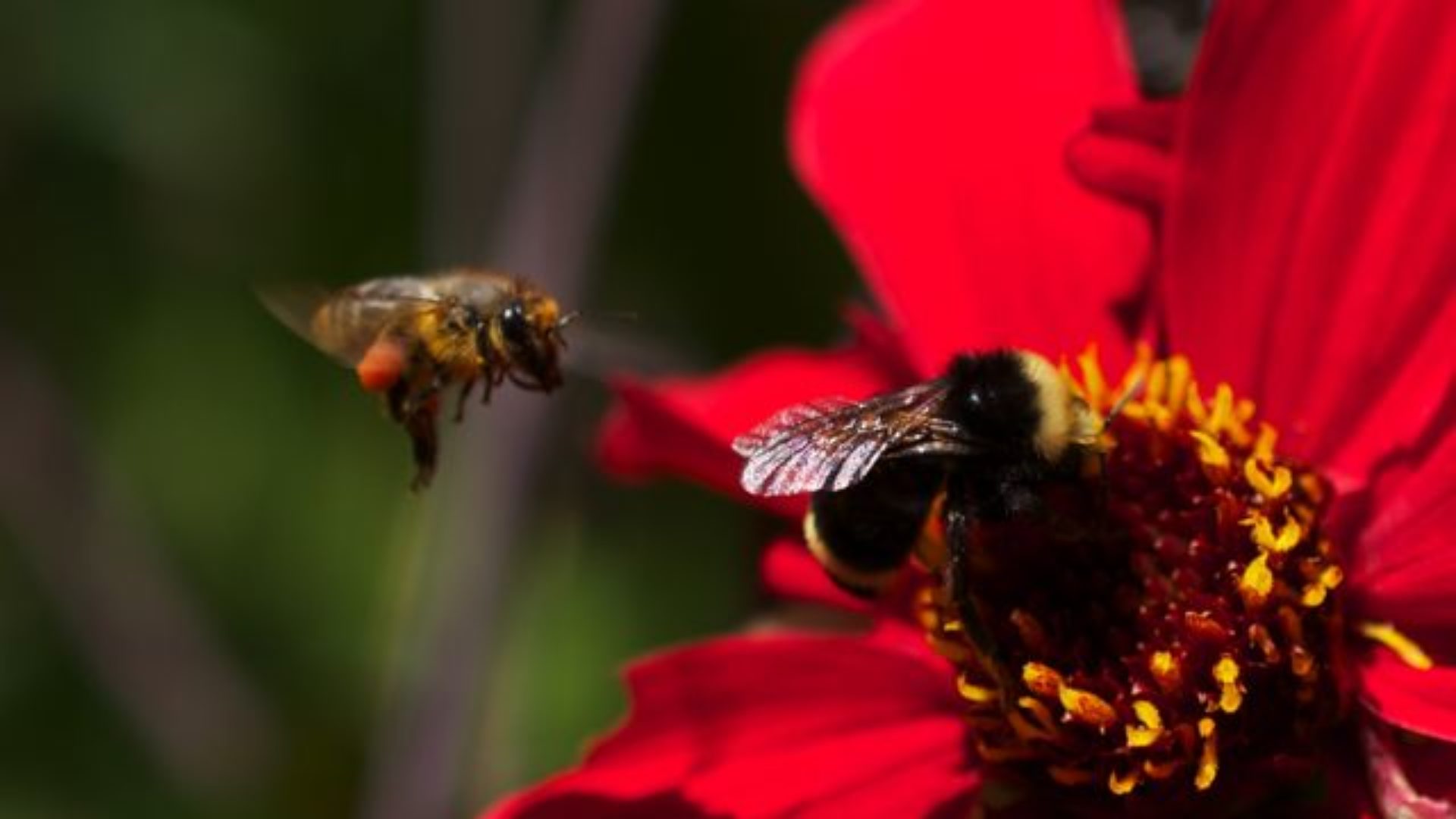Order “Package Bees” from a reputable bee supplier. Package bees are 3-4 pounds of bees and an unrelated queen. In most places packages can be ordered starting January for pick up sometime in April, depending on local climate. Unfortunately most package bees are treated with anti-biotics and miticides. For a demonstration of how to install a package go here.
Catch A Swarm. Swarming is a natural reproductive activity in which bees create more colonies. Swarm season happens primarily fora few weeks in the Spring around the height of fruit tree bloom. When the swarm leaves the hive–the old queen and 10-15,000 bees–they cluster in a temporary location while scouts go out looking for a new home. The bees will stay clustered there for a while, maybe 24-48 hours, and this is when it is possible and easy to catch them.
If it is your first time, do not try a complicated extraction from a wall or 25 feet up in a tree. Leave this for an experienced beekeeper. Go for a swarm that is hanging out on a low branch. Swarming bees are docile, full of honey and don’t have any brood or food to protect. Their MO is to stay with their queen who is in the middle of that clump of bees.
Bring a ventilated box to the location. It can be a cardboard box with some screen taped into it, a tupperware or ideally a “Nuc” or nucleus hive in the style of the hive system you will be using. Be forewarned, you do not want to leave them in a temporary structure long, because as soon as they find their home they are going to start building comb like there is no tomorrow. Best to catch a swarm AFTER your nuc or hive is ready.
If you can easily cut the branch they are on, do so and gently lay the clump in the box and close the box. Otherwise you can also shake or brush the bees into the box—if you can do it in one fell swoop, all the better. If you have gotten the queen the bees will follow her into the box before too long. If not all the bees have gone in, leave the box sitting for a few hours or until dusk. Close the box and transport it to the hive location.
Pour or shake your bees into the destination hive at dusk. To ensure they stay, you could leave the hive box closed for 24 hours. If you have painted a bit on beeswax onto your bars or left a bit of old comb inside, they are fairly sure to stay.
While catching a swarm is not difficult, hearing about swarms as a novice beekeeper will be the challenge. your best bet is to tell your friends and family you are looking for a swarm and describe what a swarm is and what it looks like. Later you may be part of list-serves or beekeeping association swarm lists.
Catch a Swarm With A Bait Box. Position a hive box or nuc facing south/southeast, with morning sun in an area where bees are present and may be swarming. In nature bees look for high spots, so setting a bait hive on a 1 story roof is recommended. Put a few drops of lemongrass essential into the box and/or several empty combs. Make a wish and say a prayer.
Take A Split aka Divide or Artificial Swarm. Splitting is the process of taking bees, brood and food from an existing hive to make a new colony. This is best done in the spring. Take the old queen, 2-3 paddles of brood and 2 paddles of food (5 paddles total) and put them in a new box. Move that box away from the parent hive. The parent colony will start raise a new queen from a young larvae after 24 hours. If all goes well you should see a queen cell within days and brood within 24-27 days.
More risky but can work: Take 2-3 paddles of brood including fresh eggs or young larvae less than 3 days old. 2 paddles of food and shake in some extra bees. If they have the right larvae, the split will raise a new queen.
Take 5 bar splits in March/April, 7 bar splits in May, 8 bar splits in June, 10 bar splits in July. Do not split your hives later than July. The colony will not have enough time to build up and store food for winter.
